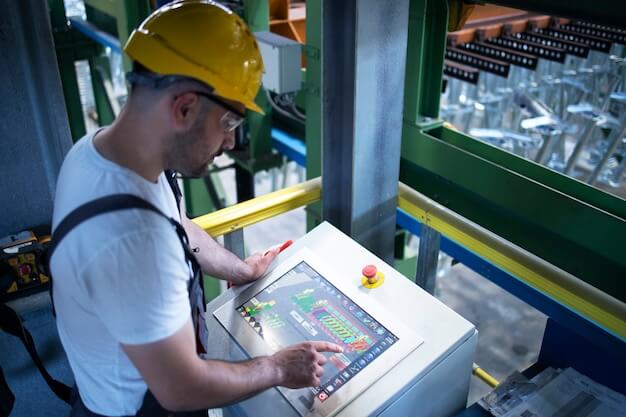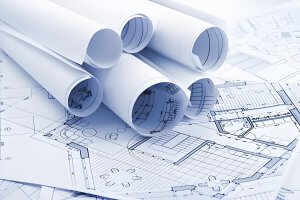Nickel and Cobalt Alloys in High-Temperature CNC Machining
Both Nickel and Cobalt alloys play an essential role in high-temperature CNC machining. These metal alloys are popular choices due to their outstanding thermal stability, hardness, wear resistance, and superb tensile strength at high temperatures. Nickel alloys have exceptional corrosion resistance, making them ideal for extreme environments with harsh chemical or physical conditions. On the other hand, Cobalt alloys exhibit excellent thermal fatigue resistance while maintaining a stable structure, even under stress and elevated temperatures.
High-temperature CNC machining refers to the procedure of shaping these superalloys using computer numerical control technology under high heats. This method calls for advanced tools capable of enduring great heat without compromising its functionality and effectiveness. In such applications, the machine’s precision and durability become crucial factors dictating the overall efficiency and success of any machining operations involving these alloys.
- Nickel – Known for its commendable corrosion resistance. Often used in environments subject to severe physical or chemical conditions.
- Cobalt – Noted for its formidable thermal fatigue resistance, it maintains structural integrity amidst intense stresses and high temperature.
Detailed Analysis of Nickel in High-Temperature CNC Machining
Nickel is widely used in high-temperature CNC machining due to its exceptional properties, including corrosion resistance, toughness, and high-temperature tolerance. It finds applications in the hot-section of airplanes, automobiles, marine equipment, cryogenic equipment, nails, pipes, and armor plating.
Comprehensive Examination of Cobalt Alloys in High-Temperature CNC Machining
Cobalt, as an alloy, exhibits distinct properties that are highly beneficial during high-temperature CNC machining processes. When subjected to high temperatures, cobalt retains its hardness and strength, leading to higher durability and longevity for the machined parts. For instance, in a case where cobalt was used in hot turbine disc manufacturing, it demonstrated superior resistance against creep deformation at extremely high temperatures.
Benefits of Employing Cobalt in CNC Procedures:
- Stellar resistance to thermal fatigue: Cobalt maintains structural integrity under thermal stress and high temperatures, minimizing wear on the components over time.
- Excellent corrosion resistance: Cobalt’s chemical attributes make it resistant to rust and oxidation, thus enhancing component life spans.
- Inherent magnetism: Cobalt’s magnetic quality aids in certain applications requiring magnetizable materials.
However, incorporating cobalt does present some challenges. Cutting tools using cobalt can become susceptible to abrasion or overheating due to cobalt’s limited conductivity properties. This could potentially degrade tool quality or lead to premature failure in extreme cases. Hence, careful planning and control must be instituted while utilizing cobalt in CNC procedures.
Comparison Between Nickel and Cobalt Alloys for High-Temperature CNC Machining
In high-temperature CNC machining, the choice between nickel and cobalt alloys implies consideration of their respective advantages and disadvantages. Quite crucially, factors like cost, durability, and workability play a considerable role in this decision-making process. On one hand, nickel alloys demonstrate superior oxidation resistance and corrosion resistance, making them highly beneficial in harsh environments. They also offer excellent thermal conductivity which promotes effective heat transfer during operations. However, its cost factor can be prohibitive for some applications.
Cobalt alloys, meanwhile provide exceptional strength at high temperatures, and are typically more wear resistant than their nickel counterparts. This makes them particularly suitable for severe service conditions that involve abrasive materials or mechanical stressors. Nevertheless, they may not offer the same level of corrosion resistance as nickel, and their high tendency toward work hardening can make them somewhat challenging to machine. Notably, while cobalt’s price point is generally higher than other common metals, it tends to be lower than nickel, offering relative cost-effectiveness for budget-conscious projects.
- Cost: Cobalt alloys tend to be less expensive than nickel alloys.
- Durability: While both have commendable abilities to withstand diverse operating conditions, cobalt alloys often outperform nickel in terms of wear resistance and high-temperature strength.
- Workability: Nickel alloys offer better thermal conductivity and corrosion resistance but machining cobalt could be more difficult due to its propensity towards work hardening.
Conclusion: Nickel vs Cobalt in High-Temperature CNC Machining
In our in-depth analysis of the use of nickel and cobalt alloys in high-temperature Computer Numerical Control (CNC) machining, distinct characteristics unique to each metal have been highlighted. The exceptional resistance of nickel alloys to oxidation at extremely high temperatures makes them ideal for operations conducted in severe heat conditions. Furthermore, their excellent surface stability gives an edge in precision manufacturing.
- Their versatile mechanical properties allow them to be tailored into a wide range of shapes and sizes with incredible accuracy.
On the other hand, cobalt-base superalloys stand out due to their superior hot hardness feature, which means that they retain their strength even under intense thermal stress.
- They also possess excellent creep resistance making them less prone to deformation over time.
This comparison is crucial as it helps machine operatives make more informed decisions on the choice of alloy to be used based on operational requirements. Thus, if one prioritizes temperature resistance and precision, nickel-based alloys may prove to be the better option. However, if durability and longevity under hours of extreme heat are essential, then cobalt-base superalloys would be more favorable.
Other Articles You Might Enjoy
- Innovative CNC Machining for Advanced Spacecraft Components
Introduction: CNC Machining and its role in Spacecraft Components Computer Numerical Control (CNC) machining has, over the years, proven to be one of the most integral pillars within manufacturing industries.…
- CNC Machining Parts Factory: Specializing in High-Quality Steel
Introduction to CNC Machining and its Significance CNC (Computer Numerical Control) machining is a critical component in modern manufacturing, responsible for executing complex cuts and designs with absolute precision. This…
- Custom CNC Machining for High-End Musical Instruments
Introduction to Custom CNC Machining in High-End Musical Instruments CNC machining, or computer numerical control machining, is a manufacturing process in which programmed software directs factory tools and machinery. This…






